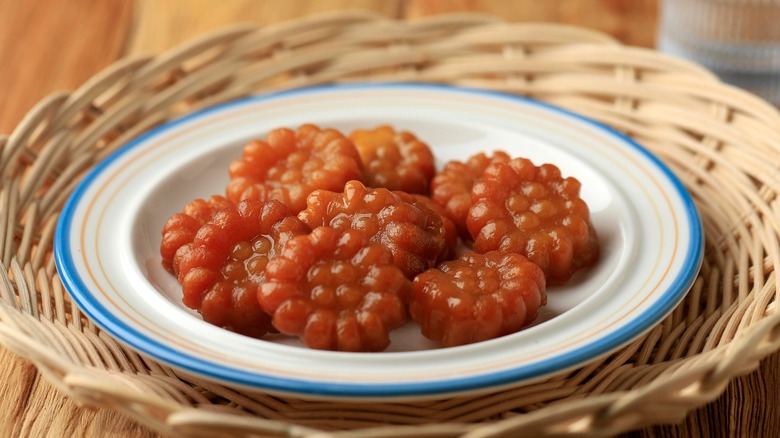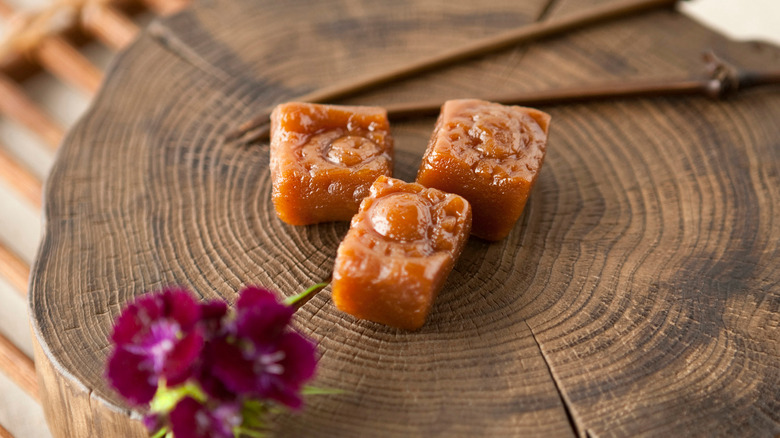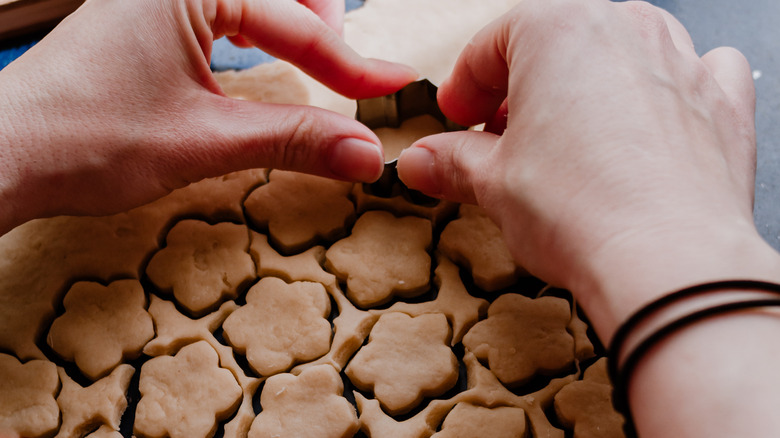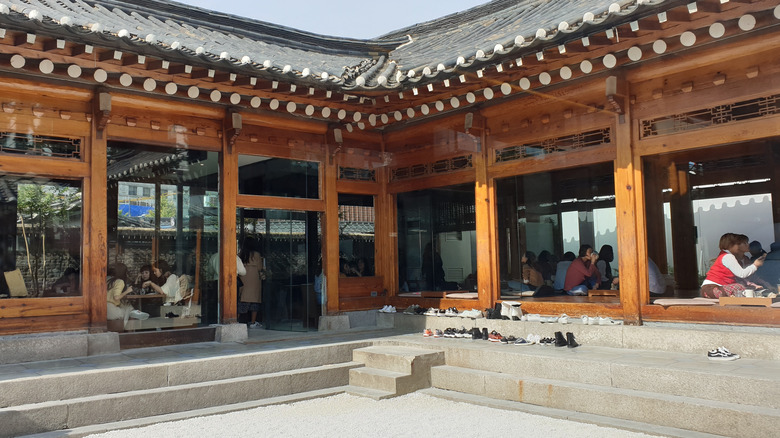The Sweet And Chewy Korean Cookies Made For Special Celebrations
Yakgwa is reminiscent of dense marzipan in texture, with a thick and moist crumb that is tightly packed together. You'll notice that the cookie is wholly glazed in a sweet and sticky residue and leaves behind blots of oil on your fingers. With a deep honey flavor, along with the faintest hint of cinnamon and ginger, yakgwa is a delicious confection that can be enjoyed throughout the year, despite being tied to one holiday in particular (via Umi's Cooking).
This golden brown biscuit is just one of the few traditional Korean cookies made for the Lunar New Year, per Kimchimari. Usually found in a round and symmetrical flower shape, this cookie is hard to miss among the array of colorful rice cakes and confectioneries. Yakgwa has become more popular outside of Korea in recent years, alongside other Korean dishes. But unlike sugar-coated Korean corndogs and croffle, yakgwa has a much longer history that dates back to the 7th century AD, according to Pinpoint Korea.
History of yakgwa
Before it became a traditional Korean cookie, yakgwa was specially reserved for Buddhist ceremonies during the Silla Dynasty, which spanned from the 7th century to the 10th century (via Pinpoint Korea). According to Cookist, yak stands for "medicine" and gwa stands for "confectionery." Yes, this sweet deep-fried biscuit was viewed as a type of medicinal treat due to its honey content. During this time, honey was believed to have healing properties, although yakgwa is hardly used for such purposes now.
Once the Goryeo Dynasty began in the 10th century, yakgwa expanded beyond Buddhist rites and entered the domain of every Korean household. Recipes became accessible to everyone, and yakgwa even made its way to China, per Sweet Tooth Design. Pinpoint Korea notes that yakgwa underwent numerous transformations in shape during the Joseon Dynasty, until it eventually became the signature round flower that it comes in today.
How yakgwa is made
Although yakgwa seems like a commonplace treat in Korea, it's a quite involved cookie to make at home. The ingredients of any yakgwa recipe are accessible and simple — you need all-purpose flour, honey or rice syrup (jochung), soju, sesame oil, and ginger (via Kimchimari). The first few steps are straightforward: You combine flour and sesame oil into a brittle, sand-like texture, like you would a pie crust, and then stir it with a mixture of soju and honey. From there, the dough becomes like clay, more pliable but dense. After the base is complete, you must simmer together honey, ginger, rice syrup, cinnamon, and water to create the syrup.
The yakgwa dough is then placed into a flower-shaped mold to make the individual cookies. Yakgwa is a deep-fried cookie, rather than a baked one, which makes it more difficult to prepare. Once the yakgwa is fried to a golden brown color, you must let the cookies rest and cool, draining them of all the excess oil. The final step is to soak the cookies in the ginger and cinnamon syrup you made for at least 24 hours, as shown by Umi's Cooking.
Where to find yakgwa
As difficult as it is to make yakgwa, it isn't as inaccessible as it might seem. As with many other foods, yakgwa eventually became commercialized and mass-produced, making it an affordable treat for all. Hankook Ilbo states that you can find yakgwa in the rice cake or bakery section of your local Korean grocery store, like H Mart. And if there are no Korean grocery stores near you, you can always order packages of yakgwa online from Walmart or Amazon.
According to Pinpoint Korea, the most appropriate place to enjoy yakgwa is at a Hanok cafe, which is a type of Korean cafe that specializes in traditional Korean tea and dessert. According to Visit Seoul, the architecture of Hanok cafes stays true to the ancient palaces that remain there, at times being built within the structures of these palaces themselves. The cafes usually keep parts of the old architecture, while incorporating renovations to keep the area clean and sleek.



